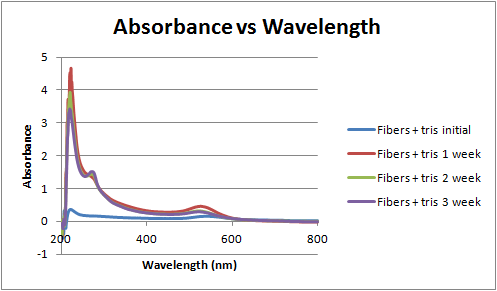User:Elaine Marie Robbins/Notebook/CHEM-496/2012/03/06
From OpenWetWare
 Au/BSA Mole Ratios Au/BSA Mole Ratios
|
<html><img src="/images/9/94/Report.png" border="0" /></html> Main project page <html><img src="/images/c/c3/Resultset_previous.png" border="0" /></html>Previous entry<html> </html>Next entry<html><img src="/images/5/5c/Resultset_next.png" border="0" /></html> |
ObjectiveTo determine the effect of the mole ratio of Au/BSA on AuNP synthesis. DescriptionEffect of Au/BSA Ratio
DataEffect of Au/BSA Ratio




 The transition from AuNP solution to AuNP/BSA fibers occurs between 130 Au/BSA and 150 Au/BSA.
  Notes
| |